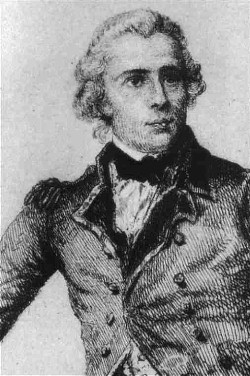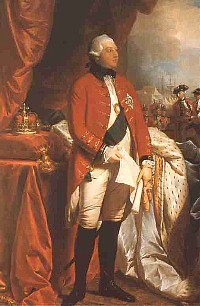|
 As Lords go, Thomas Bruce, the Seventh Earl of Elgin was in bad shape in 1798.
His health was poor, he was a bachelor and he was broke. He was however well educated and had risen through the
ranks of the military to become a lieutenant-colonel at the age of twenty-nine and had raised and commanded his
own regiment, the Elgin Highland Fencibles and had established a respectable diplomatic reputation acting as special
envoy in Vienna and Brussels as well as Minister Plenipotentiary to the Court of Prussia. When he discovered that
the British government was planning to send an ambassador to the Ottoman Empire in Constantinople he asked for
the job and got it. The warm weather would perhaps cure his ailments and it would certainly be interesting work.
He then courted and married Mary Nisbet of Earlton, a wealthy heiress and suddenly things were looking up for Lord
Elgin. As Lords go, Thomas Bruce, the Seventh Earl of Elgin was in bad shape in 1798.
His health was poor, he was a bachelor and he was broke. He was however well educated and had risen through the
ranks of the military to become a lieutenant-colonel at the age of twenty-nine and had raised and commanded his
own regiment, the Elgin Highland Fencibles and had established a respectable diplomatic reputation acting as special
envoy in Vienna and Brussels as well as Minister Plenipotentiary to the Court of Prussia. When he discovered that
the British government was planning to send an ambassador to the Ottoman Empire in Constantinople he asked for
the job and got it. The warm weather would perhaps cure his ailments and it would certainly be interesting work.
He then courted and married Mary Nisbet of Earlton, a wealthy heiress and suddenly things were looking up for Lord
Elgin.
It was known that the best models for Classical architecture were in Athens and not in Rome, and Elgin's plan was
to visit the ancient Greek capital with a few artists who would sketch and do paintings of the monuments, statues
and buildings, make molds and bring these back to England. This was a time when educated people believed that Ancient
Greek Art and Architecture was the highest expression of civilization and by bringing these sketches and copies
back to England they could be used as a model for inspiration to the British architects and artists. It was also
believed that by gazing upon great works of art a person could become somewhat enlightened by being infected by
the spirit of the piece and of the artist. Lord Elgin's goal was to inject Britain with what was left of the culture
of the ancient Greeks and raise the standards of his society. Clearly his purpose was a noble one and he would
have been unhappy had he known that he would be regarded in the future as the perpetrator of one of the biggest
heists in history. But he may have also had an ulterior motive. He was building a rather large country house and
his architect Thomas Harrison, encouraged him to bring back drawings and plaster casts of surviving objects of
the classical period to assist him with the design.
|
 Lord Elgin arrived in Constantinople with instructions to watch over British interest, promote
trade, look for new deals, get the Turks to open the Black Sea to British trade, and kick the French out of Egypt
and the Eastern Mediterranean, which were all part of the Ottoman empire. When Admiral Lord Nelson destroyed the
French fleet in the Battle of the Nile, Turkey declared war on France and suddenly the British had a new friend
and ally. When Elgin finally arrived with his new bride and entourage of artists, musicians and servants he was
treated royally. The toughest parts of his job had also been taken care of. Napoleon and his French Army in Egypt
were trapped and as good as defeated and the Black Sea had been opened to British trade. For the next several years
he performed the role of Ambassador with vigor and was quite popular. Hours were long, however and the climate
did not make him better and in fact made him worse. He contracted a severe skin disease which ate up his face and
caused his nose to fall off and he had syphilis, asthma and rheumatism. Still he did not lose sight of what he
perceived was his primary mission, the sketching and the making of molds of the great works of sculpture and architecture
that had been left over from the golden age of ancient Athens and in August of 1800 his artists arrived in Athens,
met with the Ottoman authorities and prepared for their work. Lord Elgin arrived in Constantinople with instructions to watch over British interest, promote
trade, look for new deals, get the Turks to open the Black Sea to British trade, and kick the French out of Egypt
and the Eastern Mediterranean, which were all part of the Ottoman empire. When Admiral Lord Nelson destroyed the
French fleet in the Battle of the Nile, Turkey declared war on France and suddenly the British had a new friend
and ally. When Elgin finally arrived with his new bride and entourage of artists, musicians and servants he was
treated royally. The toughest parts of his job had also been taken care of. Napoleon and his French Army in Egypt
were trapped and as good as defeated and the Black Sea had been opened to British trade. For the next several years
he performed the role of Ambassador with vigor and was quite popular. Hours were long, however and the climate
did not make him better and in fact made him worse. He contracted a severe skin disease which ate up his face and
caused his nose to fall off and he had syphilis, asthma and rheumatism. Still he did not lose sight of what he
perceived was his primary mission, the sketching and the making of molds of the great works of sculpture and architecture
that had been left over from the golden age of ancient Athens and in August of 1800 his artists arrived in Athens,
met with the Ottoman authorities and prepared for their work.
The population of Athens at the time was about 10,000 people, half of whom were Greeks, a quarter were Turkish
Muslims, most of whom spoke Greek and no Turkish and the rest of the inhabitants were Albanians, Jews, Africans
and some Western Europeans, known as 'Franks'. The town of Athens was clustered around the Acropolis, surrounded
by a wall which took about 45 minutes to walk around. The Acropolis itself was fortified and the soldiers who were
poorly paid actually lived in badly built shacks that fell down during heavy rains. It was ruled by two Ottoman
officials, the Viovode, or governor and the Disdar who was the military governor. The Archbishop of Athens had
a palace larger than the Viovode and was in charge of the education, welfare and rights of the Christians. The
different communities got along relatively well and there had been a lively trade in ancient statues and antiquities
for the last one hundred years or so.
|
|
|
Help Support Matt's Greece Guides
Do you enjoy using my site? Have you found it entertaining as well as useful? If so please show your appreciation by booking hotels through the travel agencies and the links found on my Hotels of Greece site. The small commission I make on the bookings enable me to keep working and in most cases you won't find them any cheaper by searching elsewhere.
You can find
hotels in Greece by location, price, whether or not it has a swimming pool, and see photos and reviews by using this link to booking.com which also contributes to my website when you book. If you are appreciative of all the free information you get on my websites you can also send
a donation through Paypal or Venmo
Join Matt Barrett's Greece Travel Guides Group on Facebook for comments, photos and other fun stuff. If you enjoy this website please share it with your friends on Facebook and other social media.
|


